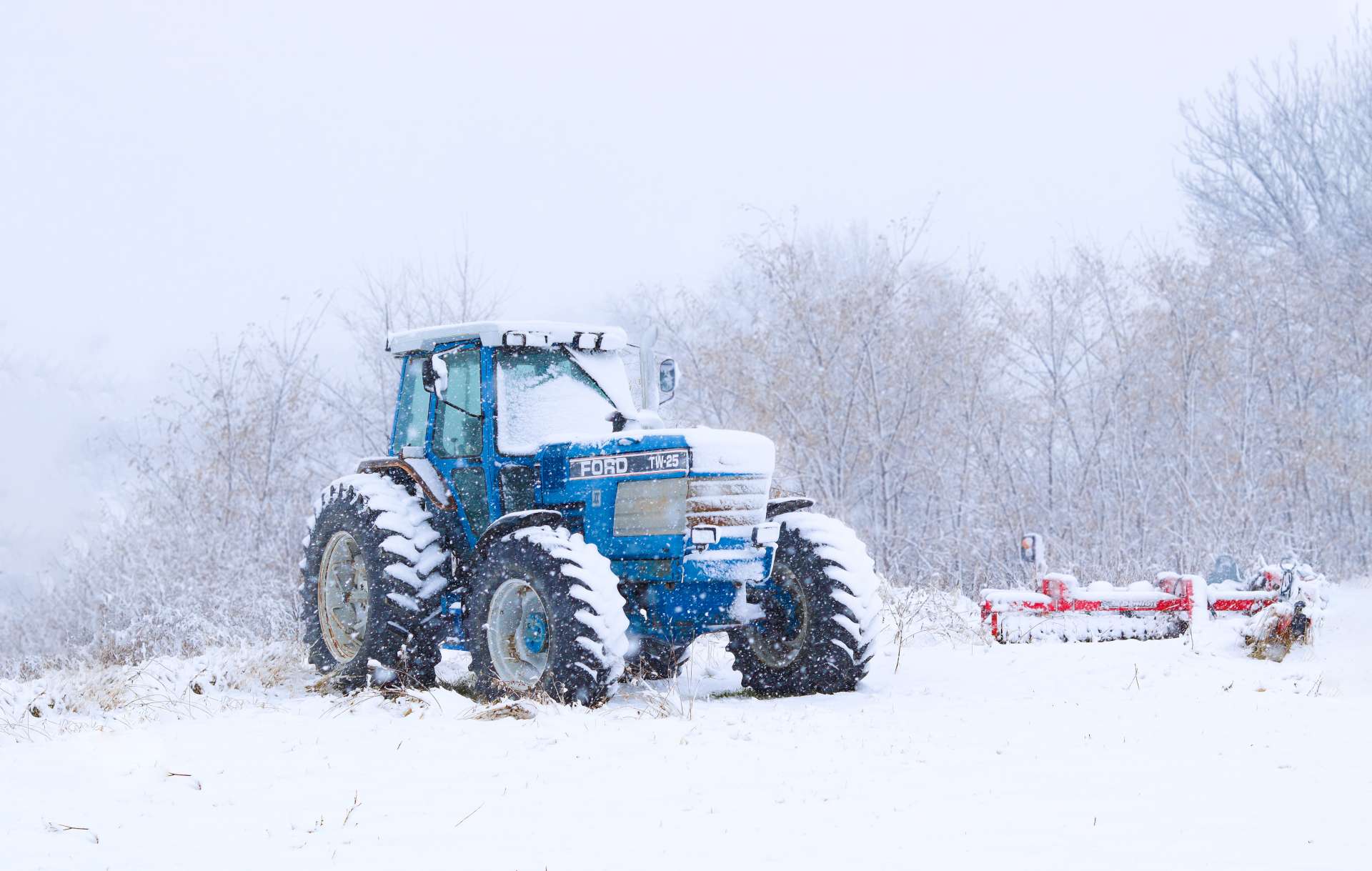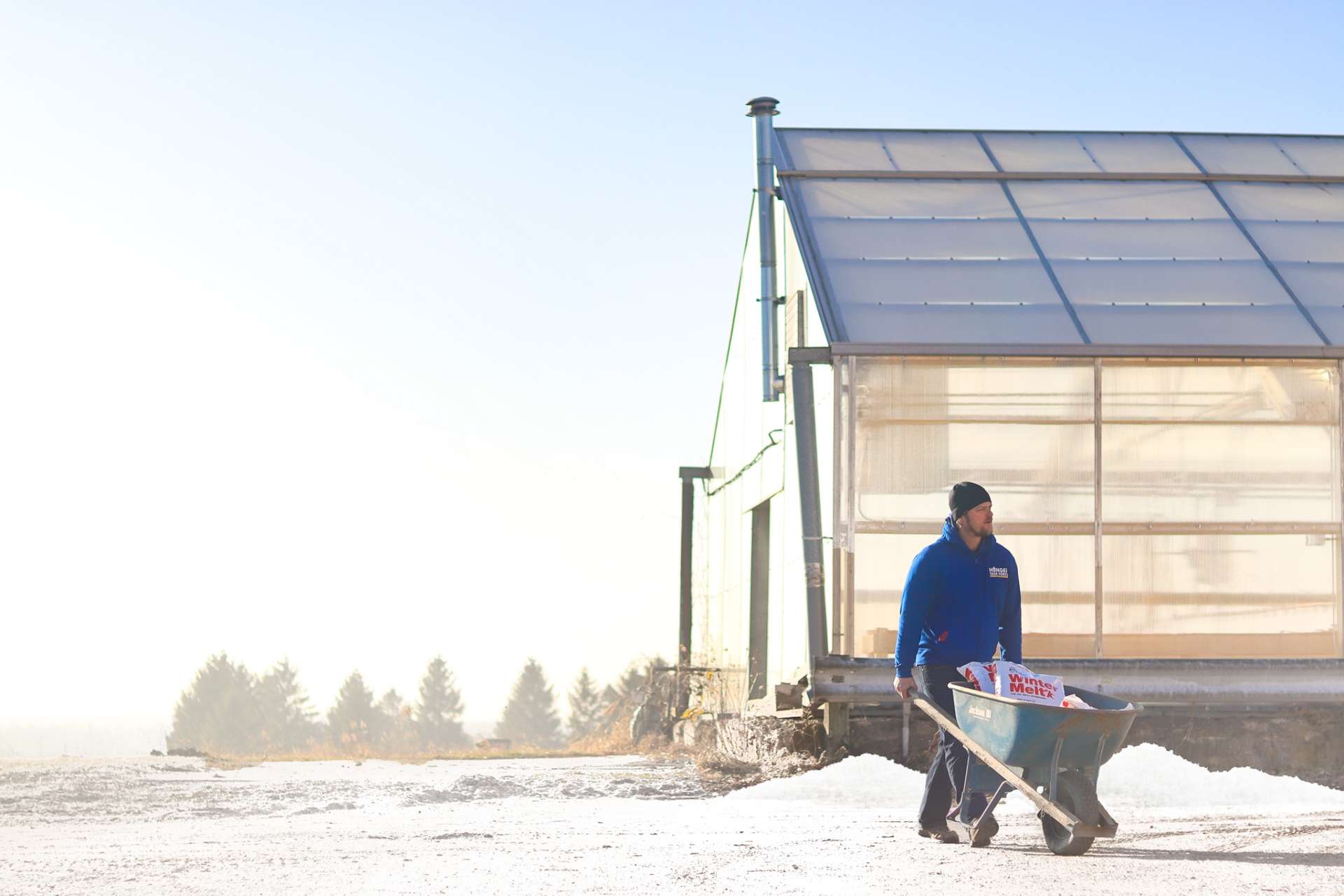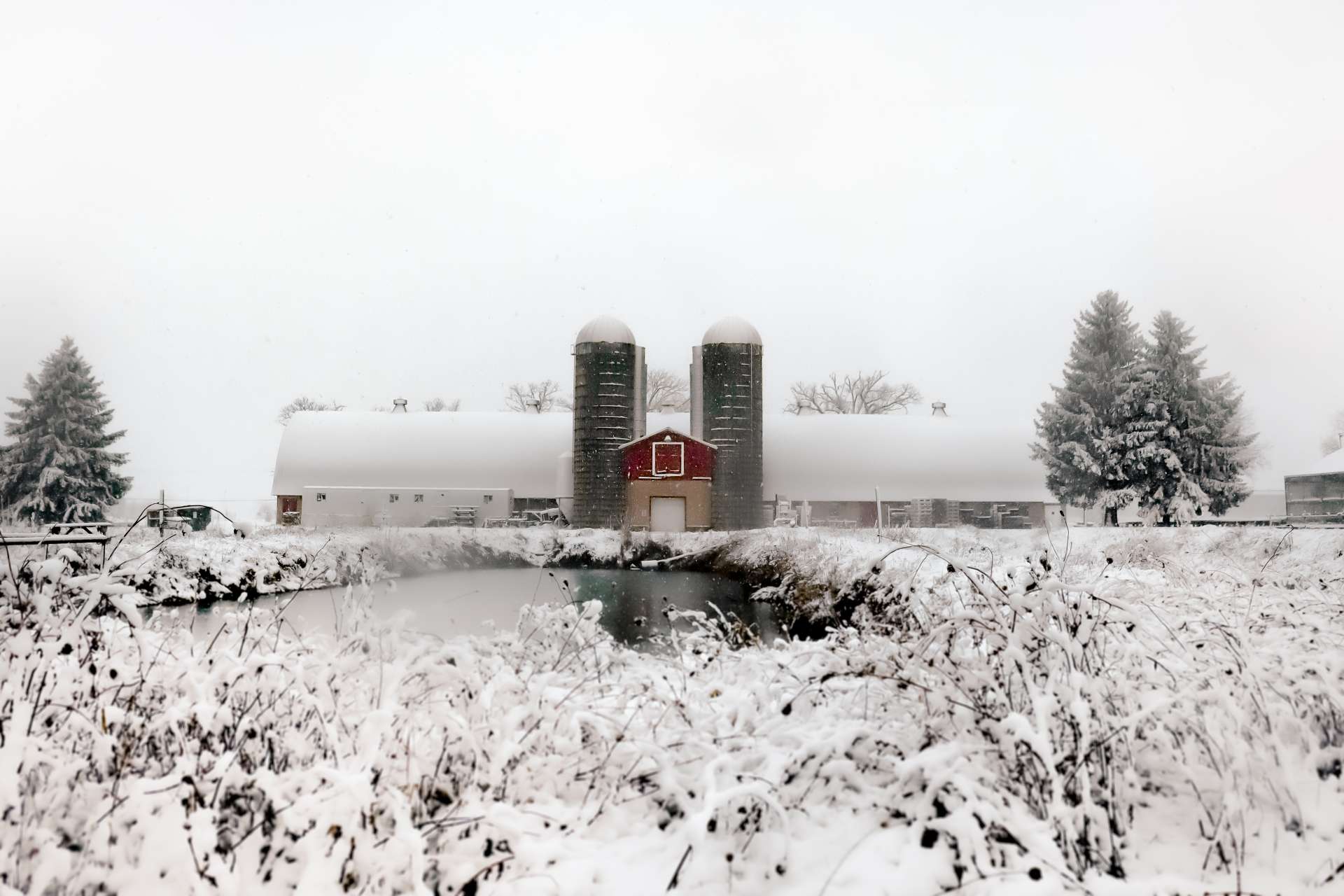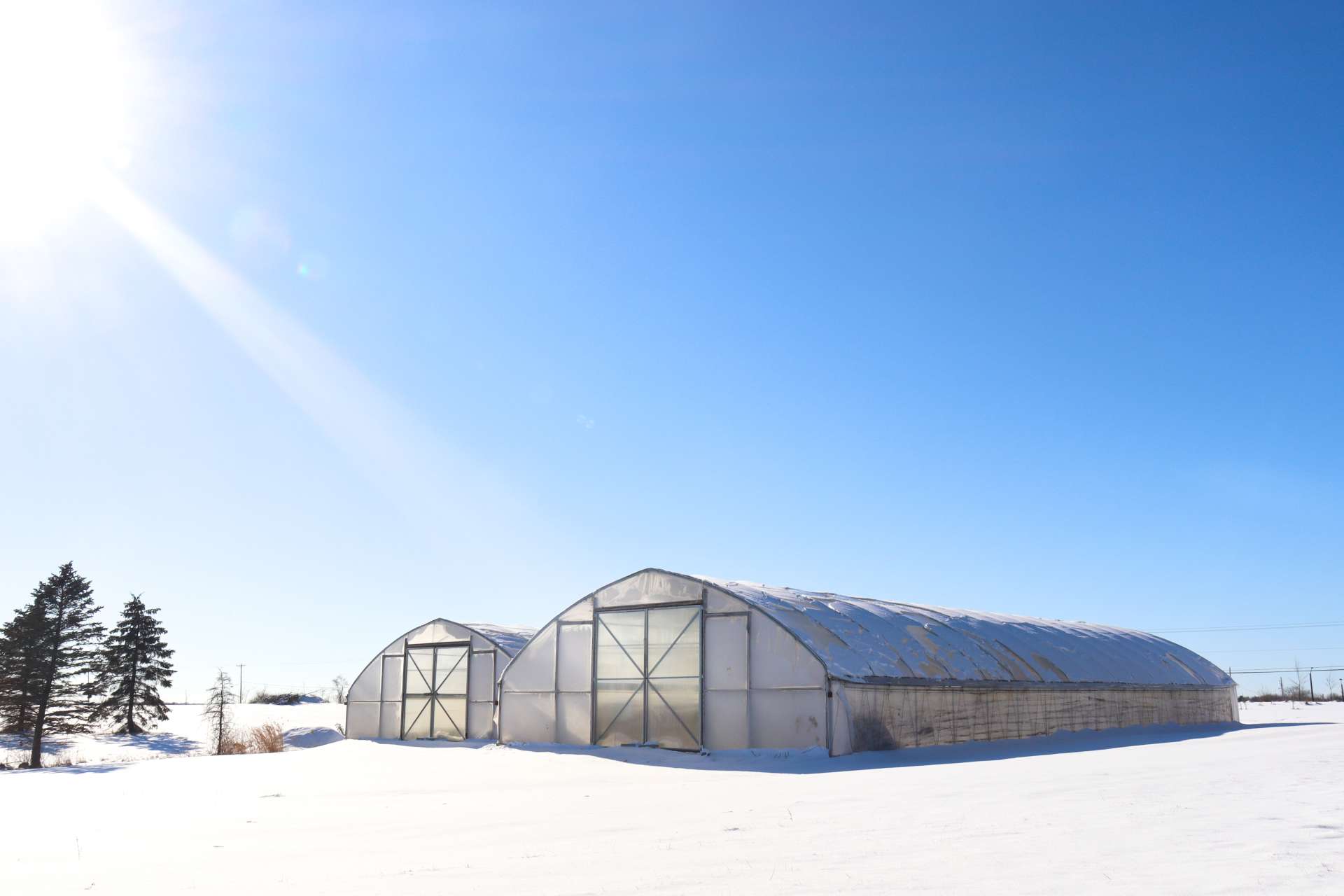Winter at The Farm: A Season of Planning and Preparation

As the winter cold envelops the Hunger Task Force Farm, the farm’s essential work continues undeterred in the chilly Wisconsin climate. Behind the scenes, there’s a flurry of activity and thoughtful planning that keeps the farm in full swing, even when the fields lie dormant.
“Everything planted in fields and in the orchards across the 208-acre farm will be harvested by the end of November,” says Sarah Bressler, Farm Manager. “Farm staff will transition into washing and storing produce so it may be distributed throughout the Foods For Families season.” Fields will then be put “to-bed”, an agricultural term used to describe the process in which fields are planted with non-cash crops to prevent erosion and address the needs of the soil over the winter.
The winter months are also dedicated to farm planning, which sets the stage for the coming year. This comprehensive roadmap encompasses everything from selecting seeds and fertilizers to organizing supplies, serving as the foundation for a bountiful year ahead.
The farm doesn’t work in isolation; it involves the Hunger Task Force network and Food Team in the process of preparing for future seasons. As part of this, the farm reaches out to pantries, meal sites, and shelters to gather feedback on the quality, quantity, and types of produce needed. This ongoing dialogue ensures that Hunger Task Force’s efforts align with the community’s evolving needs and preferences.



While the need for winter volunteers at The Farm decreases, the need for monetary support is going up. During the off-season, Bressler and her team are managing tractor maintenance expenses, equipment upgrades and the purchasing of seeds and supplies for produce grown throughout the winter in The Farm’s two hoop houses, special enclosures that allow certain vegetables to be grown longer into the winter months.
The process of growing food for the community – while being thoughtful of soil pH levels, irrigation needs, and the nutrient-level of soil – is a costly process that takes time. Hunger Task Force spends up to $25,000 in fertilizer and $20,000 in seeds every year to provide the 500,000 pounds of food infused into Milwaukee and across Wisconsin. “Not only do we produce fresh food for hungry people, but the added steps and costs of fertilizing increases the dietary value of the food, and ultimately leaves the land better than we found it,”
Pruning orchards across The Farm is a monumental task, consuming up to 800 staff hours. It’s essential for maintaining the health and productivity of the trees, guaranteeing the production of top-quality fruit in the seasons to come. Additionally, the winter season involves honey extraction, natural areas restoration work, fish stocking in February, hatchery maintenance, fleet equipment upkeep, hoop house production and maintenance, goal setting, and contributing to various areas of the agency.
While the fields may rest, the Hunger Task Force Farm remains a hub of activity during the winter months, ensuring that the community’s needs are met and that the upcoming growing season is as fruitful as ever.
For more information on how to support The Farm, please visit: www.HungerTaskForce.org/donate/farm/
